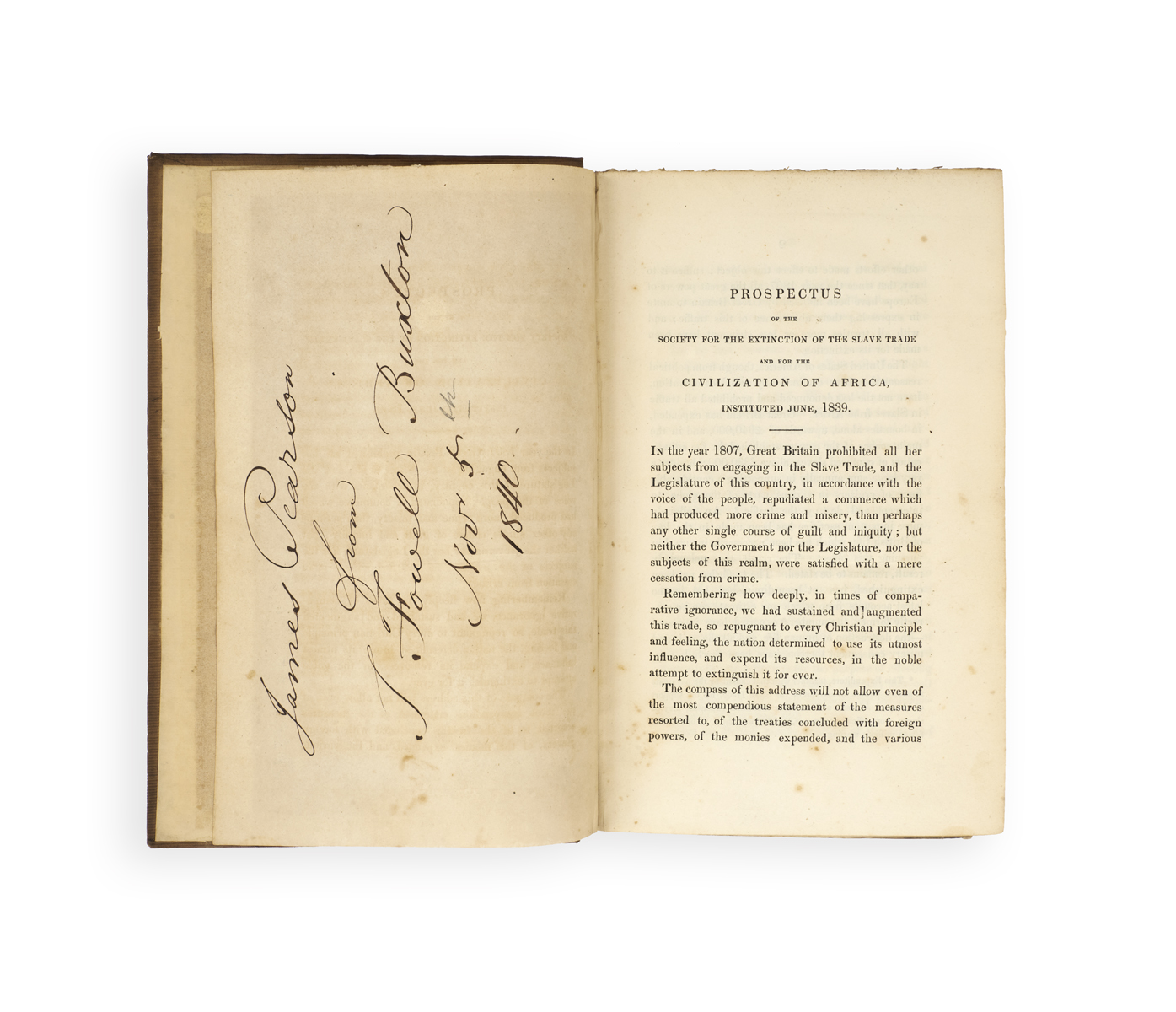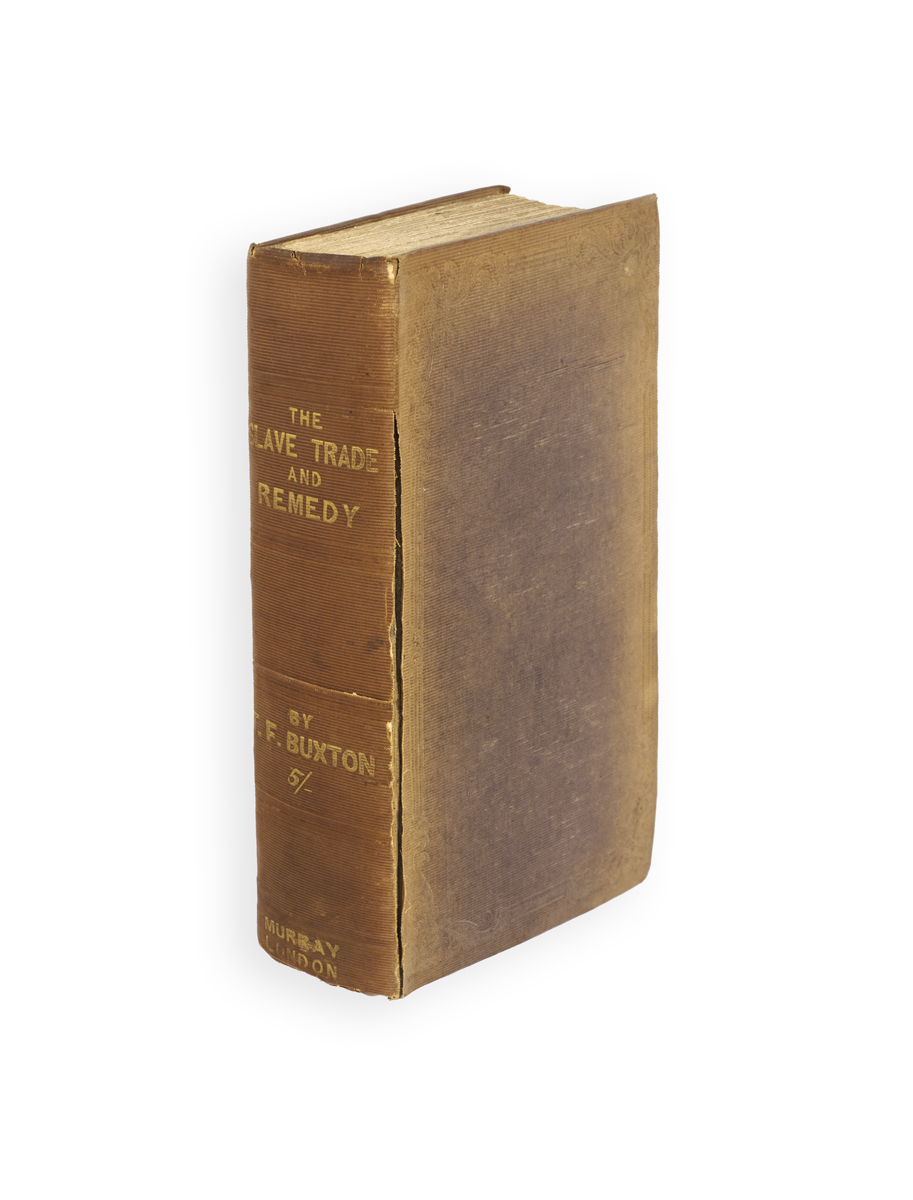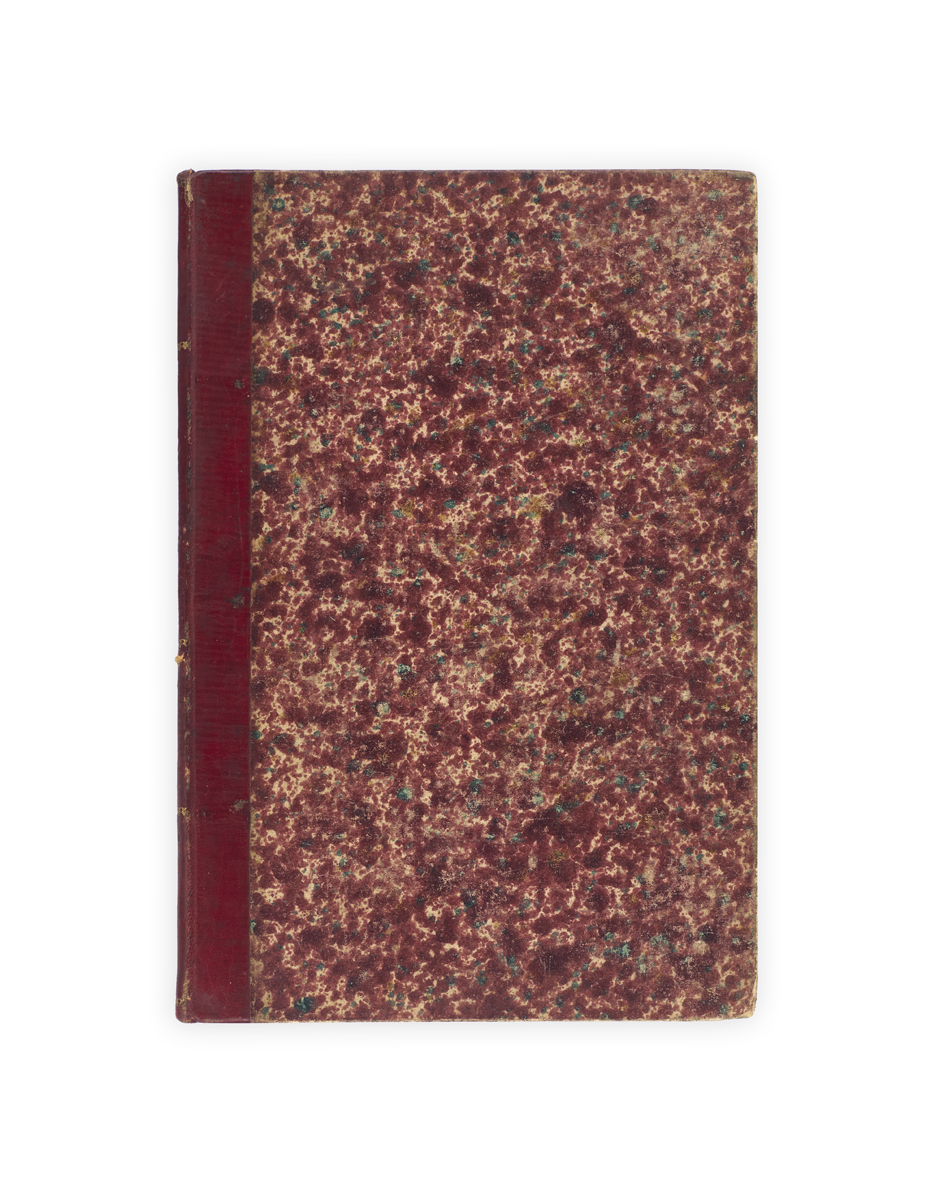

PRESENTED BY ONE ABOLITIONIST TO ANOTHER
BUXTON, Thomas Fowell.
The African Slave Trade and its Remedy …
London, John Murray, 1840.
8vo, pp. 14 (‘Prospectus for the Society for the Extinction of the Slave Trade’), [2 (blank)], viii, [3]-273, [1], vi, [277]-582, [2], with a folding engraved map by C. Walker; some occasional light foxing but a very good copy in the original ribbed purple cloth, covers blocked in blind, spine lettered in gilt; edges and spine sunned, cloth split at front joint; authorial presentation inscription to front free endpaper.
First complete edition of the principal anti-slavery work of the politician and abolitionist Thomas Fowell Buxton (1786–1845), a presentation copy to a fellow abolitionist, James Pearson, dated 5 November 1840.
The first part of the work had been published in 1839 and in a revised second edition in the same year, and was further revised for the present edition. The Remedy appeared first in a private printing ‘not to published’ earlier in 1840, then in a published edition by Murray, and finally both parts were published together here.
Buxton’s Quaker upbringing led to a career in brewing and a spirit of philanthropy; he campaigned for prison reform, and against the practice of suttee. ‘But it was in the campaign against slavery that he contributed most in his political career. He was an active member of the African Institution, founded in 1807. In May 1821 William Wilberforce, who had long led the anti-slavery group in the House of Commons, formally asked Buxton to become his partner, and then successor, in the crusade against slavery’ (ODNB). He pushed for gradual and then complete abolition in Parliament in the 1820s, and after 1832 turned his attention to the foreign slave trade. In the present works he commended ‘a more efficient naval force off the coast of Africa, treaties with native chiefs, an expedition up the River Niger, and the introduction of commercial agriculture to the Niger region. The idea was to eradicate the African slave trade by substituting Christianity, civilization, and commerce. In 1839 he established the Society for the Extinction of the Slave Trade and the Civilisation of Africa’, for which the Prospectus is bound in here as usual.
Provenance: James Pearson (1779–1853), son-in-law of Charles Lloyd of Birmingham, another Quaker abolitionist. Thomas Clarkson had earlier reported Pearson (and his brother-in-law P.M. James) as ‘clever men. Men who could convey all Birmingham with them … [and] who are both attached to the cause’ (17 September 1824).

